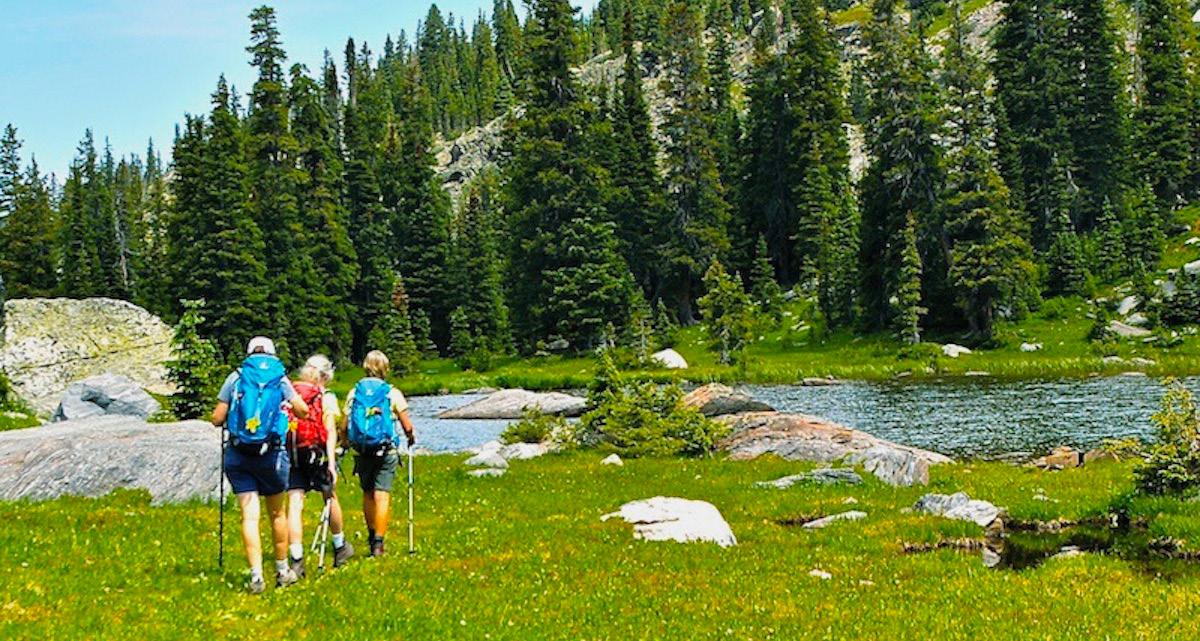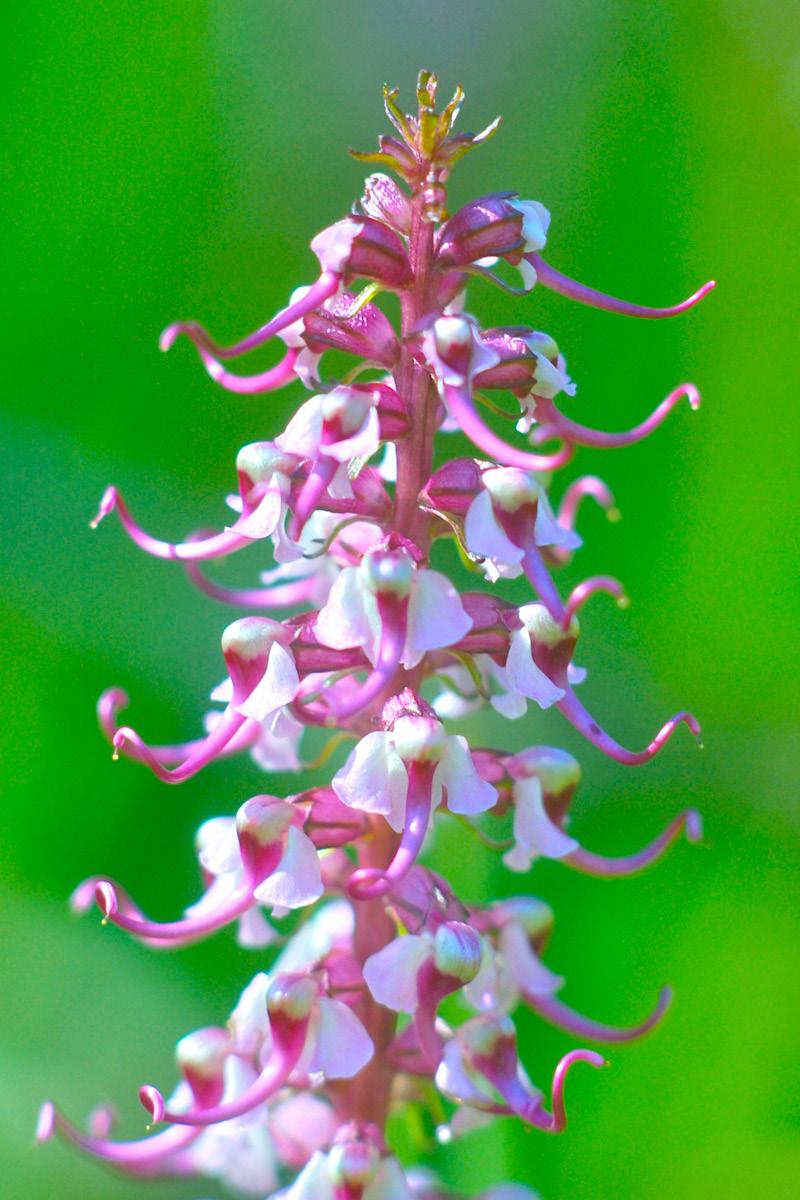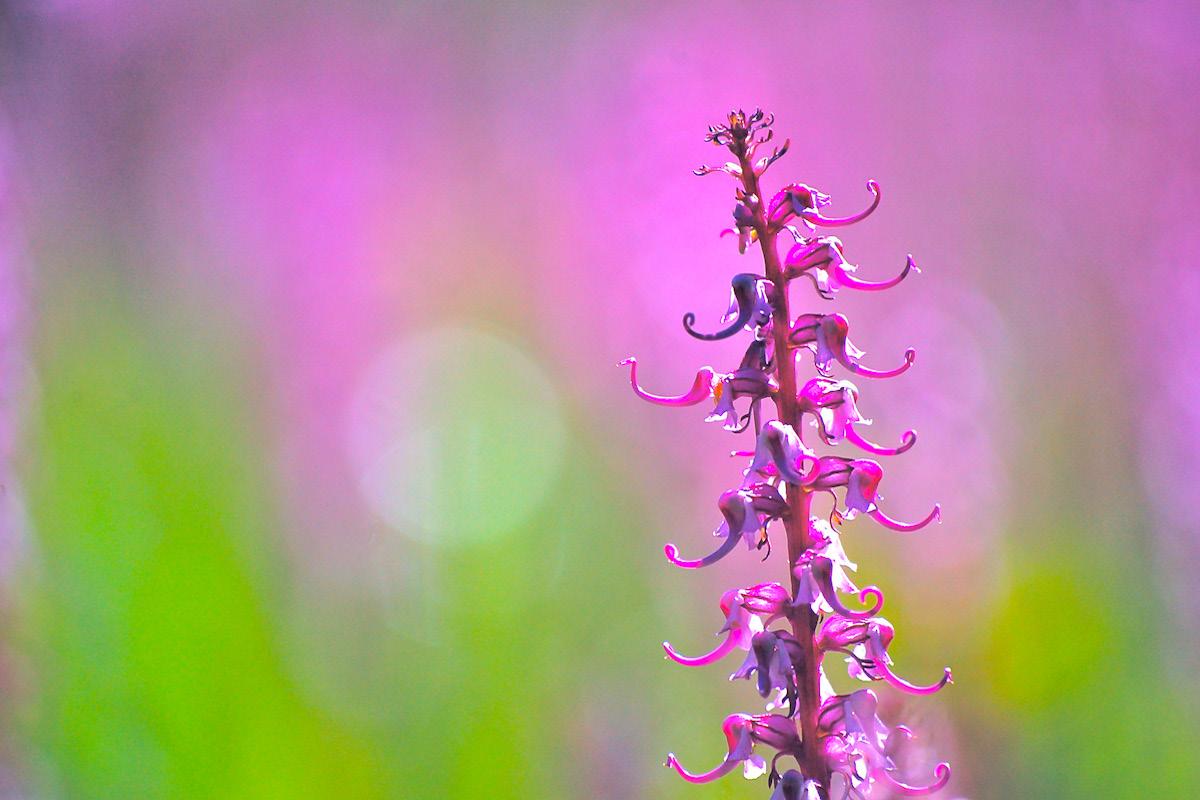
5 minute read
A hike to Timber Lake
Story and photos by Dave Rusk
“Arduous” was the word that got my attention. Such an interesting word choice the National Park Service chose to describe a temporary diversion trail around a naturally occurring, slow-moving landslide that crossed the trail to Timber Lake.
Advertisement
And yet, after having climbed the flag-marked trail that took hikers up one side of the landslide, and then down the other side back to the trail, that was without a doubt the perfect word to use - it was difficult and tiring.
However, with the exception of the arduous but brief diversion, the approximately 5-mile trail to Timber Lake was a really enjoyable trail that takes you through montane and subalpine ecosystems before reaching Timber Lake at treeline.
The trailhead parking lot is on the west side of the Park, right at the bottom of Trail Ridge Road, across from the Colorado River trailhead. The trail slowly climbs south through lodgepole pines and parallels the upper Kawueneeche Valley road before eventually turning southeastwardly, crossing the southwest slope of Jackstraw Mtn. For a while you travel quitely through lodgepole pine, steadily gaining elevation. It’s along this stretch I encountered the arduous detour.

The hiking party approaches Timber Lake
Photo by Dave Rusk
Once past the detour, the trail begins to parallel Timber Creek. After stopping along the way to photograph a patch of Heartleaf Arnica, I traveled easily along this part of the trail as it stays fairly level while Timber Creek rises to eventually meet the trail. The trail then gains some quick elevation away from Timber Creek, before leveling off again, skirting around several small woodland meadows filled with elephanthead wildflowers. The flowers were at peak bloom and I dove into a patch with my camera, gingerly moving around the flowers and leaving as little trace of my presence as possible.

Elephanthead wildflower
photo by Dave Rusk
Little Red Elephantheads (Pedicularis groenlandica) are members of the figwort family. Figwort plants at one time were used to treat hemorrhoids, which at the time were called figs. Wort is an Old English term meaning plant. The genus name for Little Red Elephantheads, Pedicularis, is Latin for louse and it was believed these type of plants were good for treating lice. So if you have hemorrhoids and lice, this might be your plant.
Apart from its remarkable medicinal value, this is one unique looking flower. The tall spikes will have dozens of pink to red flowers. The galea, or the top of the flower is hooded to look like the forehead of an elephant and the beak of the galea extends out and curves upward to give the appearance of an elephant's trunk. To complete the look, the left and right petals look like large, floppy elephant ears.
Elephantheads like their feet wet so the ground where these plants grow is usually marshy; if you try to march through a patch of elephantheads, you will more than likely end up with wet boots. It’s best to go around. You are also likely to find mosquitoes in the area, so it’s probably not the best place for lunch, either.

Eleephanthead wildflower
Photo by Dave Rusk
I was completely immersed in this pool of elephantheads, very engaged and oblivious to anything else. Entranced by these spectacular wildflowers, I worked hard to capture their beauty. Carefully stepping, I bent and crouched trying different angles, then attempted to hold some awkward pose as still as possible, making myself be calm while I captured the shot.
Once done, I released the pose with a deep outward breath, then worked another angle, another pose. After a while, I broke my concentration and stood straight, looking around. Finding another spot, I balleted over to it and started again.
Elephanthead wildflowers prefer marshy ground.
Finally sasfied that I’ve worked the patch, I navigated my way back to the trail. A feeling of contentment came over me as I walked on.
I took on another rise in the trail before exiting the woods into an open clearing. With views of the western tundra slope of Mt Ida greeting me, I knew I’d entered the world of the subalpine. I crossed the clearing and reentered the woods for one last climb into the upper hanging valley that holds Timber Lake and several smaller ponds.
There are several large rock spots that serve nicely for lunch spots in the sun. I decided to pick my way across the marshy outlet stream and find a spot where I can sit and considered a route that might take me up to Mt Ida, if I were going there. Many wildflowers are found around the lake including Globeflower and Mountain Laurel. A little exploration eventually leads to the upper ponds and I paused for a moment to take in the surroundings, looking across Timber Lake now at Jackstraw Mtn.

Falls below Timber Lake
Photo by Dave Rusk
On the return, I followed the series of waterfalls that connected the upper hanging valley with the open meadow below. The area around the upper falls was thick with chest-high Bitter Cress, blooming white flowers, mixed with occasional blue chiming bells. Once again, I worked the camera but I found the photography challenging. I began to be concerned about how these photos would turn out. Was the light too harsh, was the focus correct? In this moments of doubt, my mind wandered and I began to wonder why I bother with taking so much time to photograph.
At one point, I just stopped, pulled the camera down and looked around me. So much beauty, not just for the eyes, but for all the senses. The sound of the falls, the smells of the lush vegetation, this place. The incredible richness that returns here every year, for centuries. And it wasn’t here just for my admiration. This was pure nature, doing what it does best: creating life with so much grace and beauty, all on its own. I took note.
Finding these places, finding myself straddling a mountain stream to capture the beauty, finding myself taking in all of the wonderment, I realized this is why I photograph. When I hike, I am always looking for the shot, but I’m really just paying close attention to my surroundings, noticing the ecology of nature. What birds am I seeing, where do I find certain plants blooming, how is the stream cutting across the meadow. I am looking for patterns and purpose. I am constantly impressed with how well nature takes care of itself.
I followed the string of waterfalls down the hillside, carefully picking my way. Once back on the trail, I paused for a moment looked back at where I've come from. Then I turned and headed down the trail, looking for the next photograph.

Dave Rusk has been sauntering and taking photographs through Rocky Mountain Naonal Park for decades. He is the author publisher of Rocky Mountain Day Hikes, a book of 24 hikes in Rocky, and the website of the same name. He is the publisher of HIKE ROCKY Magazine and an important content contributor to all of these endeavors.
Photo by Margie Houser









